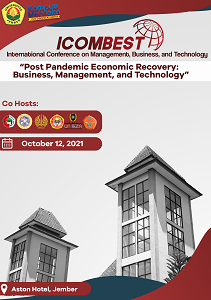PROTEIN DENSITY AND QUALITY OF KORO KRATOK (Phaseolus lunatus L. Sweet ) AND KACANG TUNGGAK (Vigna unguiculata L. Walp)
Abstract
Proteins are macronutrient, plays important roles inhuman health. It is essential to life because it is a
vital par of the nucleus and protoplasm of every cell.
The outer layers of skin, the hair, and the nails
consist of almost entirely of an insoluble protein
called keratin. The most active and abundant tissues
of the body – the muscles and glandular organs- are
high in protein content. Lean muscles, heart, and
liver contain 17-21 percent protein. Connective
tissues consists mainly of protein. Blood carries the
important iron-containing protein hemoglobin in red
blood cells. Therefore, the 50 gram daily
requirement is a must to be fulfilled.
Protein are larger and more complex molecules
than those of either fats or carbohydrate. The large
molecules of protein made up of great number of
amino acids. The number of difference amino acids
in the molecules of certain protein varies from 8 to
18 according to the size and complexity of the
molecules of different protein. The number and
composition of essential amino acids of protein
determine utility of the protein for human health.
Human obtain proteins from animal and plant food
sources. Nuts food group is plant origin of food
protein since it contain high protein, range from 17-
30 percent. Koro kratok (Phaseolus lunatus L. Sweet)
and kacang tunggak ( Vigna unguiculata (L.) Walp)
(Kasno and Achmad, 1988) are kinds of nut that
have high protein content. However, its high
amount of protein does not explain utilizing of the
nut protein for human health. Intake of 50 gram
protein does not explain the quality of protein.
Therefore, it is important to evaluate the quality nut
protein.
Published
2017-01-27
How to Cite
TEJASARI, Tejasari.
PROTEIN DENSITY AND QUALITY OF KORO KRATOK (Phaseolus lunatus L. Sweet ) AND KACANG TUNGGAK (Vigna unguiculata L. Walp).
UNEJ e-Proceeding, [S.l.], p. 116-119, jan. 2017.
Available at: <https://jurnal.unej.ac.id/index.php/prosiding/article/view/3850>. Date accessed: 22 dec. 2024.
Section
General









